Cascade Engineering – Designing Toward Function, Planet, and People
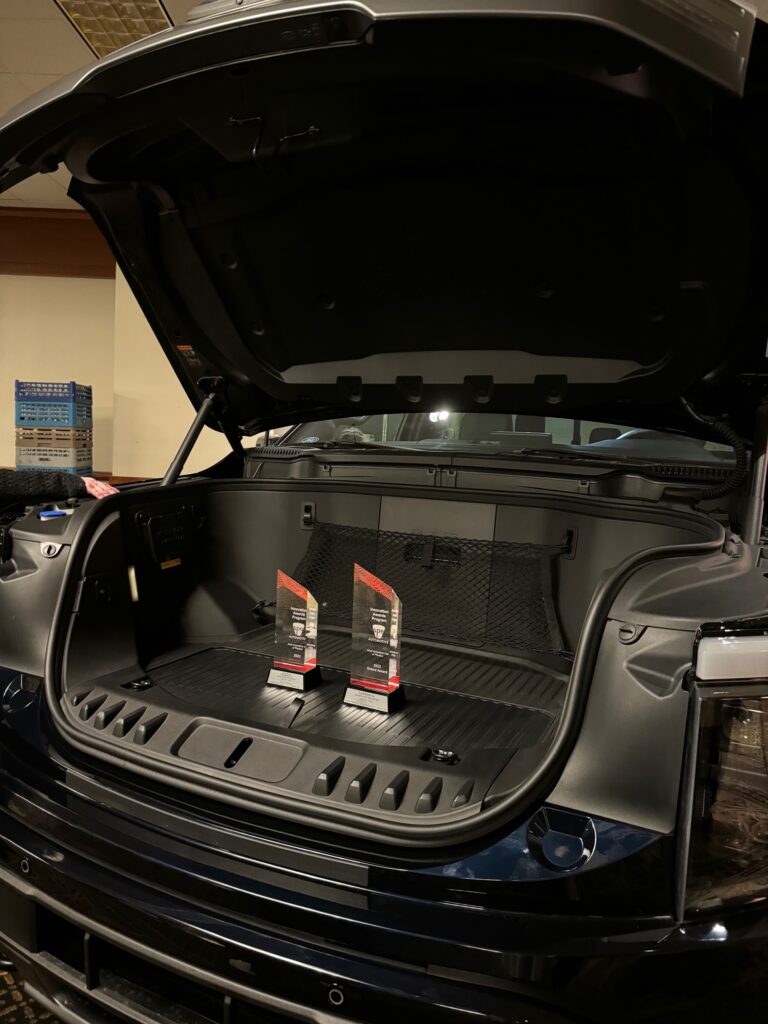
Created in 1973, Cascade Engineering specializes in large-part plastic injection molding. The second-generation, woman-owned company was recognized at the 2023 Society of Plastics Engineers Automotive Innovation Awards for its work with Ford Motor Co. on the Mega Bin/Frunk for the Ford F-150 Lightning. Frunk is a portmanteau word for a trunk on the front of a vehicle. In doing so, it converted the front trunk from a compression-molded painted sheet-molding compound to a large Class A composite injection-molded part and is currently one of the industry’s largest injection-molded product pieces. SBND interviewed Christina Keller, CEO and chair of the Grand Rapids-based Cascade Engineering Family of Cos., about the frunk’s impact on sustainability, creating circular economy solutions, and evolving trends in the industry. Q: How does sustainability stand out within Cascade Engineering? A: Cascade is a second-generation family business that is woman-owned and sustainable. We are celebrating 50 years as a triple-bottom-line company. We are a certified B Corp, ISO 14001 certified and LEED certified. Our focus is on innovative products and solutions in manufacturing and we supply to the furniture, automotive, and waste industries. Q: What role does sustainability play in the company? A: We have been organized as a triple-bottom-line – people, planet, profit – company since our inception. On the people side, we work heavily with returning citizens and also on initiatives to reduce the state of recidivism in Michigan. On the planet side, we’ve been zero waste to landfill since 2012 and have innovated a number of projects in the circular economy. Obviously, we must be profitable to engage in all these activities. Q: Can you tell us more about the frunk? I believe this is currently the industry’s largest injection molded product piece. What aspects of this impact sustainability? A: First, by eliminating the paint process there is a significant reduction of Volatile Organic Compounds (VOCs). Second, it’s more fuel efficient due to decreased product weight. Next, the manufacturing process has been streamlined to reduce energy. And finally, it’s more recyclable in that the end-of-life material can be recycled into a variety of products. Q: How do you think this impacts Southeast Michigan? A: The paint process takes place in Ford facilities, so eliminating this directly reduces VOCs in Southeast Michigan. The collaboration between Cascade and Ford serves as a promising example of potential collaborations between Tier One suppliers and manufacturers in Southeast Michigan. There are many opportunities for partnerships toward a better environmental outcome. Q: In what other ways does the frunk’s design and manufacturing process impact sustainability? A: We have eliminated the environmental burden of paint in the Frunk’s design. Additionally, the secondary routing of holes has been eliminated, reducing process steps and allowing us to produce a higher quantity of parts in less time. The seal interfaces are integrated into the assembly station for further efficiencies, and the material used is recyclable. Q: The Frunk process utilizes a 4,000-ton injection press and a tool equipped with a 16-drop hot runner system to mold these parts. Is this typical? A: No. The use of a 4,000-ton injection press is unique in the industry. The capital required to purchase this equipment poses a significant barrier for most companies. Additionally, the specialized human capital needed to operate such a large press is rare. Q: Is the new frunk product in production? A: Yes. If you buy a Ford 150 Lightning today you will get one of these pieces in your vehicle. It is fully in production and we are looking at more innovations currently. Q: What new innovations are you working on? A: Additional frunks in the near term. Before electric vehicles, we did not have the space in the front of vehicles to create a front trunk. Now, with increased demand for EVs, it’s a growing area and we are looking at manufacturing a number of additional front trunks. Q: Does being in Michigan in particular post challenges or opportunities in terms of your work on the sustainability front? A: There is an excellent network of manufacturers in Michigan – especially Southeast Michigan – that allows us to be truly innovative. A challenge is finding talent. This sector overall currently has 516,000 job openings and over the next decade is projected to reach 3.8 million. Another challenge we face is incarceration. The U.S. has one of the highest incarceration rates, with 1 in 100 adults in jail. We see returning citizens as a valuable pool of talent that can be trained and integrated into the workforce. This presents a unique opportunity for Michigan, as the state is not attracting enough new residents, and only 50% of college graduates stay here. Additionally, while college graduates remain in their first job for an average of two years, returning citizens tend to stay for seven years. This approach offers an interesting solution to addressing the talent gap in Michigan. Q: How do you see industry trends evolving? A: I see a lot of work in the AI space and Industry 4.0 focused on innovative manufacturing methods. There is a noticeable trend towards reshoring, driven by the constraints observed in the global supply chain during the pandemic. Companies are now striving to establish a local footprint, which also helps reduce the carbon footprint from transportation. Additionally, significant efforts are being made to maximize package density for more efficient shipping and transportation. Regarding talent attraction and retention, we have more 65-year-olds in the U.S. than ever before, while our younger demographic is declining. Q: How is Cascade adapting to the changes in the industry? A: We are constantly scanning the horizon to look at trends. On the sustainability side, we are developing an ecosystem of recycled plastic sources to enhance our clean stream of recyclable materials. We are looking at streams from medical waste that could be used, and post-consumer and post-industrial applications. We are also working on additives to use in our products such as hemp fibers, dust waste, and trash materials. And finally, we are working with
Accelerating Solar Through Connecting Contractors
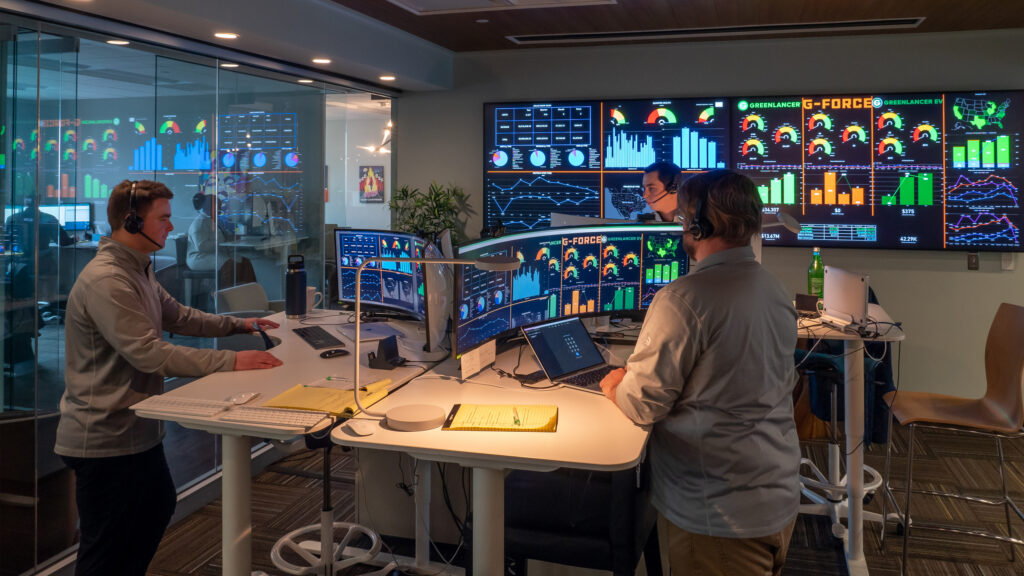
Established in 2013 in Detroit by Patrick McCabe, GreenLancer is dedicated to accelerating the adoption of solar energy and EV usage. The company’s software platform is designed to connect solar installers with design and engineering partners while guiding the permitting process, making it easier and faster for contractors to do their work. SBND interviewed McCabe about the current landscape for contractors in the industry. Q: What inspired the creation of GreenLancer? A: Following my graduation as a mechanical engineer, I moved to California and began working for a solar company. It became evident to me over time that there was a significant gap between contractors eager to install solar systems and the availability of engineering and design services to support them. Upon returning to Michigan, I founded GreenLancer with the vision of creating a platform where contractors could easily connect with engineers and designers, effectively bridging this gap. Today, GreenLancer is dedicated to advancing the adoption of clean energy and EV infrastructure, contributing to sustainability efforts not only in Southeast Michigan but nationwide. Q: Could you explain GreenLancer’s core function? A: GreenLancer operates as a marketplace that links contractors with engineering and design firms, streamlining processes to accelerate the installation of solar energy and EV charging stations. Since our inception in 2013, we’ve assisted over 7,500 contractors on more than 200,000 clean energy projects nationwide, totaling over $2.5 billion in solar energy and EV infrastructure investments. Q: Those are big numbers. Can you tell us more about how those numbers are achieved? A: We work as an online marketplace – akin to Amazon. The software connects contractors globally to design firms and engineers globally 24/7, so we can connect hundreds – even thousands – daily who then can move into the project phase. If you do the math, GreenLancer has been in existence for 11.5 years, so this equates to the support of approximately 48 projects per day being executed around the world. Q: What challenges do contractors typically face in the solar and EV sectors? A: The solar and EV charging industries pose unique challenges since they are so new. Many contractors lack the specialized knowledge and resources required for these installations, often necessitating costly engagements with engineering firms. Additionally, navigating the diverse and complex permitting processes across different states can be overwhelming. Issues related to utility interconnections further complicate PV installations, potentially causing delays and increased costs. These factors frequently deter contractors from entering the solar and EV markets altogether. Q: What impact does this have on the economy? A: Simplifying the complexities of permitting and engineering enables clean energy contractors to scale their operations, thus enhancing the economy. It also expands access to green technologies for both businesses and residents. Q: Your website mentions incorporating concepts from lean manufacturing in the automotive industry. Can you elaborate on this? A: As a Detroit-based company, we’ve adopted the automotive industry’s assembly line approach in a virtual capacity, optimizing our marketplace operations for efficiency and scalability. We also embrace concepts of continuous improvement methodologies and lean manufacturing used in the automotive industry to evolve alongside the needs of our users, enhancing our technology and service offerings over time. Q: How do drones factor into the solar industry? A: Drone use by solar companies has increased dramatically in recent years for residential, commercial, and utility-scale projects. Drones can save time, increase worker safety, and help pinpoint maintenance issues. In fact, many contractors are now using drones to gather data for solar site surveys, inspections, and marketing images. Several drone software companies specifically cater to the solar energy industry. Q: Solar farms are controversial in many places, including Michigan, mainly over questions of land use. What are sustainable practices for solar farm installation that can help mitigate the environmental and community impact? A: It’s helpful to consider the community and environmental impact of solar farms from the planning stage to ensure they provide the most benefit possible to the community. However, some practices are difficult or costly to implement at certain locations. It’s best to avoid constructing solar farms on undisturbed natural areas in ecologically sensitive areas. Therefore, using already cleared land usually has less impact on wildlife and is often more cost-effective. It’s helpful to keep some existing vegetation that doesn’t shade the array and to minimize soil disturbance during construction whenever possible. Some solar farm developers are experimenting with wildlife-friendly fencing around solar farms that allows wildlife to pass seasonally or is high enough to allow small animals to pass underneath. Another option, if space allows, is to create vegetative buffers along the fence line for wildlife habitat. Planting native wildflowers can reduce the need for mowing, promote biodiversity, and encourage pollinator populations. This can benefit nearby farmers because pollinators are essential for many crops. Some solar farms use sheep as an alternative to mowing to manage vegetation growth, reducing the need for mechanical mowing equipment. This approach typically involves partnering with local ranchers. Q: This is an expanding industry – is the size of the labor force keeping pace? What are the qualifications needed to get started? A: The solar power, energy storage, and EV charging industries need many skills to expand. The 2024 Electriciation Contractor Survey highlights some issues related to the labor force for solar, energy storage, and EV charging station contractors. The report found that 49% of contractors surveyed report a lack of experience and industry-specific knowledge as a challenge for hiring qualified professionals, particularly electricians and field technicians. Transitioning to clean energy is boosting the demand for licensed electricians. According to the Bureau of Labor Statistics (BLS), the demand for electricians is expected to increase by 6%-9% from 2022 to 2026. In addition, the North American Board of Certified Energy Practitioners (NABCEP) Certification helps launch a career in the solar industry. Various training programs are offered by trade schools, community colleges, universities, and nonprofit organizations designed to advance the clean energy industry. Be sure to subscribe to our newsletter for regular updates on sustainable business practices in
Changing the Chemistry of Plastics

For the last four years, Heartland – a Detroit-based company founded by Tim Almond – has been working to perfect a natural fiber product it calls Imperium that replaces synthetic materials in plastic, helping to reduce the carbon footprint of plastic by up to 50%. This natural material is hemp fiber, and the company has partnered with farmers in Michigan and across the Midwest to integrate it into their existing crop rotations, which then can increase profits for the farmers, and enhance the soil. With funding from BASF business incubator Chemovator’s Elevate program, Heartland is commercially producing the product and is ready to deploy it in the reusable packaging industry, followed by the automotive and construction industries. SBN Detroit talked to Almond about the product and its impact on sustainability. Q: Tell us about Heartland. A: Heartland is a material science company based in Detroit that leverages natural fibers to help companies reduce their carbon footprint while solving the challenges of the big three sustainability missions – environment, social, and economic, without compromising product performance. The fun part is that on the product side, we get to work with the local farming community to increase their revenue per acre and increase soil health as we help manufacturing groups make better products that are better for the environment. Heartland was born out of a passion for problem-solving and sustainability. Q: How exactly do you impact and work with the farming community in terms of sustainability? A: The farming community is going through a very difficult time right now. The two major crops in Michigan, corn and soybean, are seeing a tight income situation because the value of the crops is low but the cost of chemicals and seeds is high. Profit for farmers is all but nonexistent. Hemp fiber production is a great rotational crop within corn and soybean and drives premium income per acre while improving the soil through micronutrients. The third most popular crop in Michigan is wheat, and here, we are capitalizing on underutilized land. Typically, this land sits empty from midsummer to spring, but hemp fiber grows quickly so they can grow a crop after the wheat has been harvested. We are seeing organic matter improvements in soil and aeration which lead to better production of future crops. We truly believe hemp fiber could be a staple crop in Michigan and across the U.S. Q: How many farms in Michigan are involved today? A: We work with ten or so farms in Michigan and several other states. Q: What is the process of developing the Imperium product? A: Hemp fiber is planted densely and grows to be eight to 12 feet tall. It is then cut down and treated so it’s protected from the high temperature of plastic manufacturing. Once it gets in the plastic it looks and functions exactly like plastic. So essentially the Imperium product line is made from one ingredient – hemp fiber. In the future, there are opportunities to use other natural fibers that could add value to the plastics and rubber used in the manufacturing space. Q: How do Imperium products mix with plastic to create a better end product? A: Imperium is not a finished product, it is an ingredient in the final product, being plastic. Much like making a cake, you use flour, sugar, baking powder, etc. So in making plastic, there are materials added that when combined, make the final product. Today, ingredients such as glass fiber and impact modifiers are used, as are other materials that increase the plastic’s carbon footprint. Imperium replaces large portions of the bad products with natural fiber. We can shave off 30% to 40% of the product’s carbon footprint by swapping some ingredients. It’s like eliminating sugar from your cake recipe but still enjoying the sweet flavor. Q: How did your team achieve the development of and engineering behind the products? A: A lot of failure. Trial and error. It took time to figure out what works. In many cases, the fact that we did not have the proper resources and funding gave us time and space to get it right. If we had funding three years ago, we probably would have purchased the wrong equipment. So we had to be creative with our processes, and we finally landed on a method that works with extreme efficiency. Q: Where are products deployed commercially and in what industries? A: We are commercially able to produce master batch technology for three areas of the marketplace – automotive, construction, and reusable packaging. For the auto market, think exterior components, car handles, and roof racks. Reusable packaging is our bread and butter. This consists of bins, totes, and pallets – things used to move materials in a warehouse. We are working with about 100 groups on the product development now. In the reusable packaging space, we are in the final stages of integrating into their commercial lines. These lines move hundreds of millions of pounds so it’s a meticulous process to implement. The auto industry involves a three to five-year lifecycle, but we do have an opportunity for next year’s product model. This is undefined as of today though. In the construction industry, we are in the middle stages of creating opportunities. Q: What global brands are you working with? A: Some are confidential at this time. But we work heavily with BASF and their Ultramid B Nylon 6 product, which is on every vehicle in the world. There is an opportunity for tremendous growth. Q: Creating partnerships with larger companies appears to be one strategy that you have. How does that work and do companies have equity stakes? A: In the chemical marketplace there are producers and processors who work with distributors as partners to expand sales capacity. We are taking a similar approach in that regard. Q: How is Heartland supported by BASF Chemovator? A: The investment came from Chemovator which is BASF’s incubation and seed funding arm, and with their venture capital investments
The Cleanup Club: Working to Mitigate Plastic Pollution in the Great Lakes
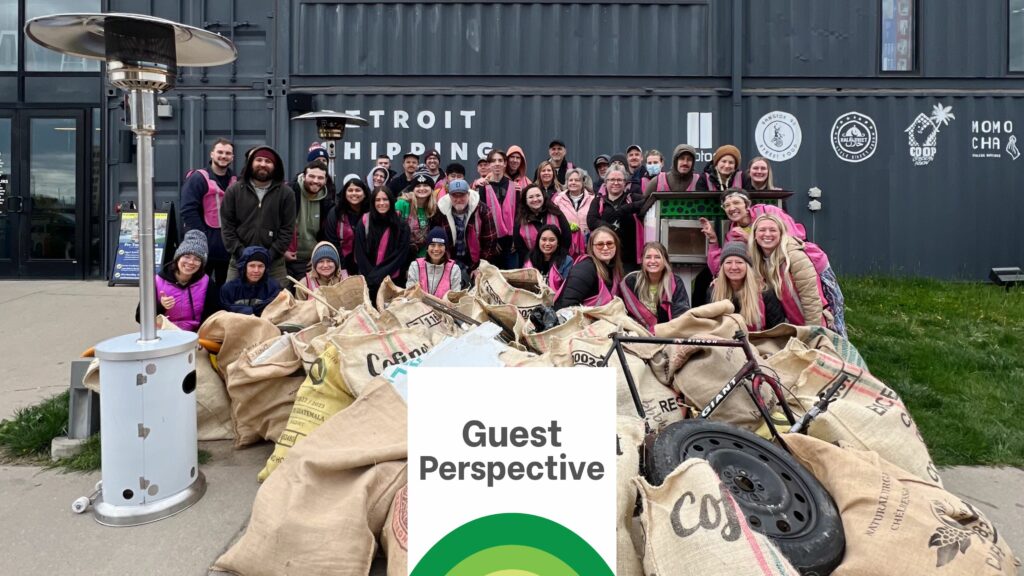
HANNAH TIZEDES IS THE FOUNDER AND EXECUTIVE DIRECTOR OF THE CLEANUP CLUB Before founding The Cleanup Club, a nonprofit dedicated to protecting our communities and Great Lakes from plastic pollution through cleanups and creativity, I amassed a collection of over 100,000 pieces of plastic debris from the Great Lakes shorelines during solo cleanups. I used the colorful found objects to create thought-provoking art pieces and installations to inspire conversations about how we can all play a role in protecting the places we love. Creativity has continued to play a key role in The Cleanup Club’s mission to protect our communities and Great Lakes from plastic pollution while having fun. We aim to serve as an approachable source to help educate and spark dialogue with people online and in person about the urgent need for action to protect our freshwater resources. In 2016, a study from the Rochester Institute of Technology revealed that nearly 22 million pounds of plastic pollution enter our Great Lakes every year, with major cities such as Detroit, Chicago, and Toronto being primary sources. By 2024, plastic production has continued to increase globally, and so has the urgent need to protect our waterways from harmful impacts. This is particularly crucial as these bodies of water provide drinking water to over 40 million people across the US and Canada. Recent studies have shown that topics such as climate change and plastic pollution often leave people feeling frightened and negative. With the rise of terms like “eco-anxiety” and studies emphasizing the growing harms of plastic pollution, The Cleanup Club aims to push forward crucial work for a more sustainable future and cleaner waters. At the same time, we strive to create an uplifting community that empowers individuals, communities, and businesses to take action together through joyful and collaborative experiences. We understand that working together is essential when it comes to finding upstream solutions and mitigating plastic pollution in our region. This is why The Cleanup Club values collaborating with aligned local businesses and global brands. We aim to educate and expand the conversation about Great Lakes plastic pollution through community cleanups, educational programming, and interactive creative projects around Michigan, focusing on Southeast Michigan. When partnering with The Cleanup Club, local businesses enjoy the benefit of a passionate group of volunteers cleaning up their neighborhoods while driving awareness and business to their unique offerings. Past partners, contributors, and sponsors include Walking Lightly and 86 Plastic (local zero waste stores in Metro Detroit), Dessert Oasis Coffee Roasters, HiBAR, Detroit Shipping Co, Belle Isle Conservancy, Royal Oak Sustainability, and more. Community events are not only fun ways to get outside and take part in collective action but also serve as a way to collect data on top-polluting items and top-polluted areas for advocacy and research efforts that further promote upstream solutions. While we acknowledge that cleanups are not the ultimate solution, we strongly believe they play an accessible and active role in education and advancing our collaborative efforts for a brighter, more sustainable future for people and the planet. Learn more at www.thecleanupclub.org and follow on Instagram at @the.cleanup.club. Be sure to subscribe to our newsletter for regular updates on sustainable business practices in and around Detroit.
Demand, Support for Sustainable Events Boosts Schupan Business Unit

Wixom-based Schupan began in 1968 as a six-person scrap metal recycler. Today, the company has 600 employees and offers multiple services related to metals and plastic, including recycling, fabrication, and materials trading. Schupan also provides sustainable events planning – planning, managing, and executing sustainable efforts for sporting events, festivals, conferences, and businesses, among others. Jessica Loding, Schupan’s chief sustainability officer and director of events, said this segment of the industry is growing as more businesses and organizations seek assistance in creating more sustainable events. SBN Detroit interviewed Loding about her work in this area and the industry trends. Q: Schupan was incorporated in 1968. Give us a little background about the company and how it’s evolved. A: Schupan started as a metal recycling company in Kalamazoo and has grown to handle beverage container recycling nationwide. We also broker materials internationally, have a multimillion-dollar inventory of aluminum and plastic parts that we sell to manufacturers, help manage the disposition of electronics, and offer sustainable event management services. Q: How has recycling evolved through the years in your experience? A: The industry has grown vastly over the last couple of decades as more and more people and businesses realize the benefits of recycling, from the perspective of climate change and the creation of the circular economy. As technology has developed and end markets for commodities have expanded, the industry has realized substantial growth to the benefit of all parties. Q: Tell us more about your Sustainable Event Management Services. A: Schupan was an early adopter of these services, and only a dozen or so companies specialize in event recycling. We support various events, including music festivals, art fairs, conferences, sporting events, casinos, hotels, community events, and business events. Q: Why do you think businesses should adopt sustainable events? A: Consumers expect companies to operate with a focus on the environment, their carbon footprint, and their recycling efforts. So, companies that embrace sustainability can have a more meaningful engagement with customers. Entities and businesses that go above and beyond to create new ways of thinking and acting around sustainability can develop a great brand story. We have partnered with some to pioneer some really interesting new recycling techniques. Q: What is an example of this? A: We worked with Dow last year and its Great Lakes Bay Invitational to develop golf tees from the plastic mesh fencing used at the venue. We partnered with Evolve Golf, Bull Engineered Products, and KW Plastics to turn the mesh into pellets and then mold the pellets into tees. Q: What are the biggest challenges that businesses face when it comes to sustainable event planning and management? A: The first challenge is the economics. It takes money, and budgets don’t always allow for the cash flow needed. They often rely on sponsorship money to provide funding and advance the programs. The second is the availability of services. They need to locate labor, have resources to support the efforts, find a waste hauler, and more, but that takes time and effort and can be a challenge. Q: Are you seeing more companies wanting this service? A: Yes, we’ve seen a large increase in inquiries for services over the last couple of years, especially since the pandemic. I think it made people more aware. We are now receiving more calls than we are making on the business development side, which is nice to see. Q: How has sustainable event management evolved over the time Schupan has been involved in it? A: Sustainable event management used to be called event recycling. It focused on bottles, cans, and food waste. Now, it encompasses much more. It goes beyond waste reduction to calculating the carbon footprint, identifying carbon reductions, water conservation planning, and community integration. It’s exciting to see how it’s grown. Q: What are the most impactful things businesses can do to make an event more sustainable? A: Any event can include basic recycling to divert items from landfills. Events, in general, have huge economic value—bringing local and out-of-town people into the community to dine, shop, and spend time is important. Q: What trends are you seeing with the businesses you work with? A: More and more events are aligning with corporate sponsors, a great way for businesses to get involved and gain recognition. This is a big shift. Corporations want to align with sustainability programming with public facing. It’s a nice shift. Be sure to subscribe to our newsletter for regular updates on sustainable business practices in and around Detroit.
Small Businesses Become Resilience Hubs in Eastside Detroit Communities
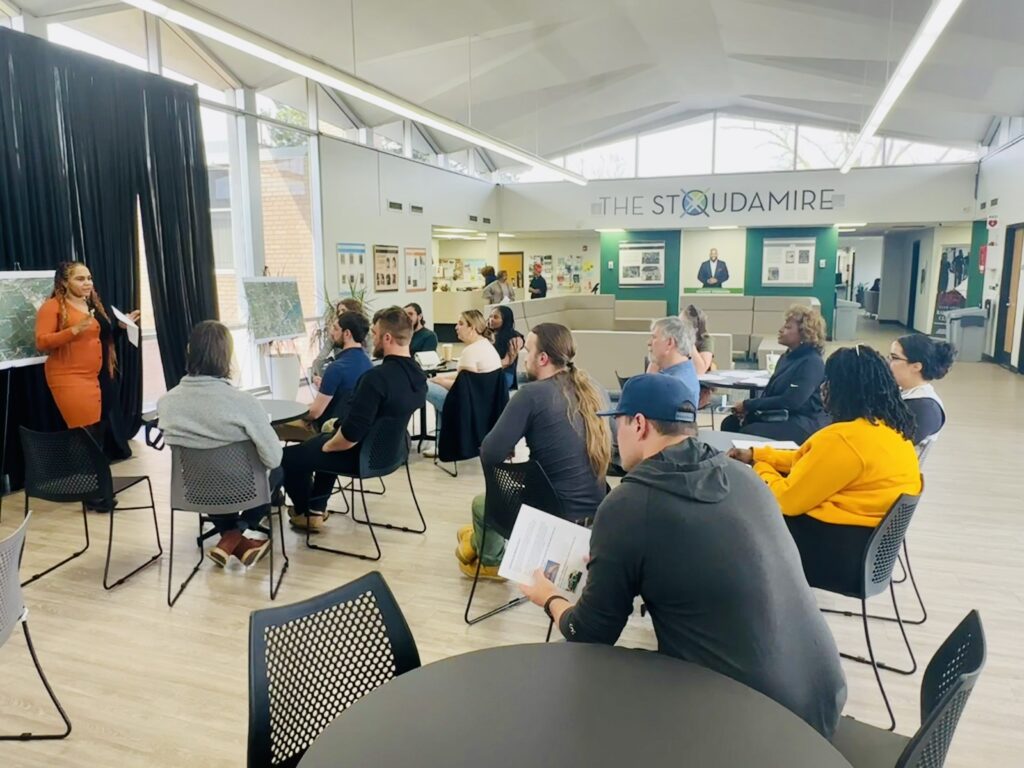
Elevate is a 24-year-old 501(c)(3) nonprofit focused on creating equitable and sustainable communities. Their areas of focus span energy efficiency, water, workforce development, and creating healthy and efficient homes and buildings in communities. Part of the work it is doing in Detroit is helping to develop resilience hubs in response to flooding and ongoing climate-related injustice issues. This is part of the Resilient Eastside Initiative (REI), a culmination of residents and organizations including the Eastside Community Network (ECN), The City of Detroit Office of Sustainability, and the Eastside Climate Action Coalition. Tim Skrotzki, associate director of partnerships at Elevate, and Terri O’Neal, project manager of community programs, talked with SBN Detroit about this work and the role businesses are playing. Q: What is the impetus behind Elevate? A: Elevate is a Chicago-based nonprofit formed in 2000 as an energy cooperative focused on energy efficiency and reducing the drag on the grid. We have projects that touch almost all states. Over the past twenty-four years, our work has expanded to include water, solar, electrification, environmental health, and workforce development. Q: How is Elevate supporting resilient and sustainable communities throughout Detroit and Southeast Michigan? A: One important initiative is the development of Resilience Hubs on Detroit’s East Side. Resilience hubs are vital community centers offering education, support, and resources while fostering community connections. These hubs – many of which are small businesses in the neighborhoods – serve as trusted spaces in touch with residents’ needs. They help facilitate coordination of resources and services across various stakeholders before, during, and after climate-related emergencies. These are being led by the Eastside Community Network and the Resilient Eastside Initiative (REI), a network of 12 resilience hubs on Detroit’s east side, which officially launched in August 2023 in partnership with The City of Detroit Office of Sustainability with funding from the Kresge Foundation. One of these spaces is The Commons, a café, laundromat, and community space that operates in MACC Development’s storefront space on Mack Avenue. This is a safe space for the community that offers charging stations, resources, and more for neighbors during power outages or emergencies. They are also training and upskilling local residents as a form of workforce development. Neighborhood Grocery is another hub, offering healthy food access, refrigerators, and charging stations to neighbors during power outages. This is a framework a lot of businesses can adopt to provide more resources for their communities. It’s an opportunity for businesses to think about where they fit into the community and how they can help the neighborhood remain resilient and sustainable. Further, part of the funding we received from Kresge is being used for training black contractors in solar and EV infrastructure. Called the Detroit Clean Energy Contractor Accelerator Program, the program helps create growth paths and lift up black and brown contractors to help them build their businesses. We believe that if we develop contractors in clean energy in Detroit they will then hire and train more Detroiters to work with them. Q: What best practices can you share from the sustainability work you do in terms of the business and community impact? A: There are federal incentives for businesses and buildings to become more energy efficient. It’s so easy to track what energy you are using and lower it. There are huge opportunities here that people are leaving on the table. Also, any business looking to grow and be sustainable has to be ingrained in the community. Providing resources that help the neighborhood become more resilient should be on every small business owner’s mind. Q What are trends you are seeing when it comes to the sustainability that impacts businesses? A: We are all dealing with new issues we have not dealt with before. Flooding, power outages from 100-year storms, and more. Making a building more resilient is extremely beneficial to business owners, so they don’t have to reduce hours or close during a flood or power outage. There are new impacts that climate change is driving, and if you are not thinking about how to make your business more resilient you may be losing money. Also, businesses should be and are becoming more involved in community organizations, meetings, and community engagement. It’s thinking about how they can better meet the needs of the community. Perhaps be a place where people can come during power outages and offer resources to support. And finally, all businesses should have a climate emergency plan on the operations side of things for their staff, and if applicable, their community. Be sure to subscribe to our newsletter for regular updates on sustainable business practices in and around Detroit.
The Greening of Detroit: Working to Create Healthy Urban Communities Through Trees, Education, and Jobs
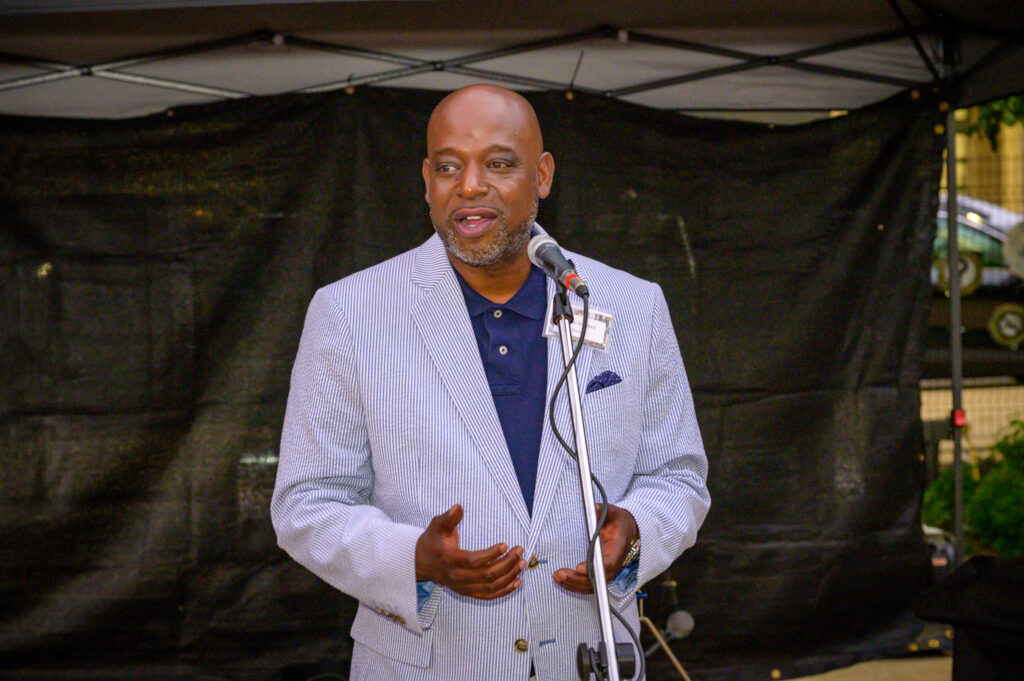
Established in 1989, The Greening of Detroit is a nonprofit organization with a mission to inspire sustainable growth of a healthy urban community through trees, green spaces, healthy living, education, and job opportunities. To date, it has planted 147,000 trees and trained more than 1,000 people through its five-year-old workforce development program. Putting trees in the ground is job one for the organization, but it also is involved in stormwater management and providing landscaping services to residents and businesses in the communities they serve. President Lionel Bradford has been with the nonprofit since 2010 and is proud of its 35-year history. SBN Detroit interviewed Bradford about the organization’s programs, impact, and future. Q: What was the impetus to begin The Greening of Detroit? A: For years Detroit was known as the Paris of the Midwest, partly because of the tree canopy cover the city used to have. Between 1950 and 1980 Detroit lost over a half million trees due to Dutch Elm Disease, urbanization, and neglect due to financial struggles. In 1989, The Greening of Detroit was founded to reforest the city of Detroit. Since its inception, 147,000 trees have been planted throughout the city. We also started a youth employment program as a way to educate and take care of these trees. Our Green Corps Summer Youth program at its height employed 200 high school students. That number decreased due to COVID-19, but it’s coming back up. In a nutshell, our organization has two main pillars: workforce development and green infrastructure. Q: What are you currently working on in terms of tree planting? A: We are in the third year of a five-year strategic plan where we are looking to plant 20,000 trees throughout Detroit, Hamtramck, and Highland Park, and train 300 individuals who have barriers to employment. This plan fits into a larger initiative we are involved in called the Detroit Tree Equity Partnership. This is a collaboration with American Forest, DTE Energy, and the City of Detroit in which we are planning to plant 75,000 trees over the next five years. There is a buzz in the city right now in terms of trees. We’ve done a lot of engagement and outreach. Recently we conducted a 500-tree giveaway, and there were still cars lined up after we gave away the last tree. It’s great to see this. Q: What is your involvement with the Walter Meyers Nursery? A: Walter Meyers is a tree nursery on 72 acres in Rouge Park that for years went untouched. In 2004, The Greening of Detroit – with the city’s permission – took over managing that property to serve as a training ground for our adult workforce development. We have used it as an outdoor classroom setting. In 2017, we put together a master plan to turn it back into a working nursery operation. As an organization, we are looking for ways to generate revenue for our training programs and to plant our trees. We want to control our destiny and cut down the carbon footprint involved in having trees shipped in. We have planted over 4,000 trees in the nursery and harvested our first 200 trees last year. The goal is to get to a point where we are selling 5,000 trees annually to municipalities, the City of Detroit, and the community. Q: What sustainable impact do you think this brings? A: In addition to creating green infrastructure in the city, community engagement is at the heart of what we do. Our job is to get trees in the ground, but we do not want to impose our will. We want to be invited into communities. Not only do we want residents to have a say, but we also want them to be a part of the work. This is a model that speaks volumes in terms of sustainability, and it’s held up across the state and the country. Q: How does The Greening of Detroit impact businesses? A: We engage and work with business owners in the communities we are involved in. Many of them bring us in to green their properties. The more green space we can add for businesses, the more it helps aesthetics and foot traffic. Green space and economic development go hand in hand. Also, from an economic standpoint, our education program puts people into jobs doing work around the city, which enhances the economic viability of Detroit as well. Q: In what other ways does the organization create green infrastructure in the city? A: Stormwater management. We have installed three major bioretention ponds around the city that hold up to a million gallons of water. These are in Rouge Park, Chandler Park, and Eliza Howell Parks. We also work with residents and businesses to replace impervious surfaces with green infrastructure through our Land + Water WORKS Coalition. Q: You have an adult workforce program from which over 1,000 Detroiters have graduated in the past five years. How does this work? A: This is a six-week program called the Detroit Conservation Corps. Sixty percent of those who have graduated were previously incarcerated. We are passionate about helping that population get credentials and secure jobs that pay decent wages. We work with a network of businesses looking to employ, most from the tree care and landscaping industries. These companies work in tandem with our advisory committee to help us build our curriculum and help with job placement. We have hired a small percentage of our trainees ourselves. Q: What is the future of The Greening of Detroit? A: Community engagement will always be a focus. We also are rebuilding our environmental education. These programs fell by the wayside before and during COVID-19, but we are working to get into schools, facilitate field trips, and educate our youth. We truly believe that getting the Meyers Nursery operations up and running is key for us moving forward. It will be important for us to generate our revenue. I’m proud we’ve been able to sustain the organization for 35
As Recycling Grows, So Does the Need for New Strategies, Technology
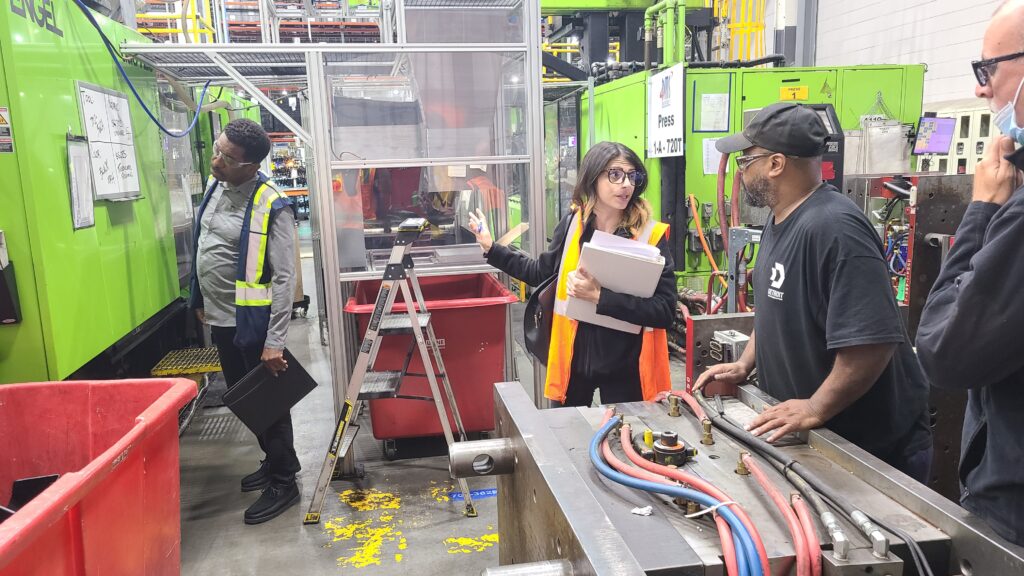
In 1995, after graduating from the College for Creative Studies with a degree in industrial and product design and an eye toward bettering the environment, Keith Zendler founded Environmental Services of North America Inc. in Detroit. Nearly thirty years later, the company retooled and relaunched to focus on waste management and upgraded its technology to help it expand and improve its services and expand its network of partners domestically and globally. We interviewed founder and owner Keith Zendler to learn more. Q: Tell us about RecycleMax. A: RecycleMax is a tech-based reboot of a company I founded in 1995. At that time, we had a plant in Detroit and a fleet of 14 trucks and we were focused mainly on paper and similar recyclables. We now provide the environmentally sound management of virtually all solid and liquid waste materials. I have always been interested in sustainability from a community standpoint – in building stronger and more sustainable communities through technology. So, I sold the original recycling company in 2008 and started a civic tech company focused on designing an online community network for people and organizations to better work together. Through this company, I launched a multisided SaaS platform with the intent of improving stakeholder communication, collaboration, and engagement to help leaders solve political, health, social, environmental, and economic issues. Eventually, I realized I could apply this technology to the recycling industry and provide businesses with robust and customized waste management programs that help them meet their sustainability goals and reduce their carbon footprint. So, RecycleMax was relaunched as a tech-based company in 2020. We use the same technology we offer clients internally for our operations. The crux of the platform is its ability to facilitate a community network and real-time communication. We have used it to build a global network of recyclers and haulers that we can leverage for clients. Q: How is the industry different now, than in the 1990s? A: There was a time when we had to push companies to recycle, and they would only do so if we could show that it either saved them money or at the very least did not incur additional expenses. That is no longer the driver. Companies are doing it now no matter what. That is a surprising shift. We work heavily in the auto industry, and I’ve been amazed at how progressive these companies are and how seriously the industry is taking environmental measures. Adding to that, until recently, most of our recyclables were shipped overseas, and we relied on China to handle them. A lot of waste was ending up in the ocean. China shut that off and it certainly caused a disruption, but ultimately it made the industry stronger. There are more and more companies being established in the U.S. to handle these materials. The industry has made a tremendous amount of progress, and it’s exciting. Q: Who are some of your customers in Detroit and Southeast Michigan? A: Union Tank Car Company, Detroit Manufacturing Systems, Fishbeck, and Piston Automotive to name a few. Q: In your experience, what are the challenges companies face with recycling? A: Education and incentivization. Employees often need to be trained in why and how to recycle and handle their waste materials. It’s also vitally important for individuals to understand the difference they are making. Providing that data offers motivation to continue the momentum toward success. Q: What are the biggest challenges you see that businesses have with waste management? A: Participation is probably the biggest challenge. Companies need all employees on board. Training and education are critical to a successful recycling program. There is still a lot of work to do in getting people to take recycling seriously. Plastic is another big challenge for the industry. There are types of plastics that are not commonly recycled due to the unique resins involved. It can become difficult for companies to manage this. Trucking and logistics are a challenge as well. Transportation costs can be the biggest component when it comes to recycling. Q: What are the biggest opportunities? A: I think there is a massive global opportunity in recycling. And by applying technology, the potential to streamline efficiencies is huge. I never thought I’d be in recycling for over thirty years, but It’s a wonderful industry. It feels good to be able to help businesses meet their recycling and waste management goals and do their part to better the environment. Be sure to subscribe to our newsletter for regular updates on sustainable business practices in and around Detroit.
New Detroit Director of Sustainability is Focused on Community
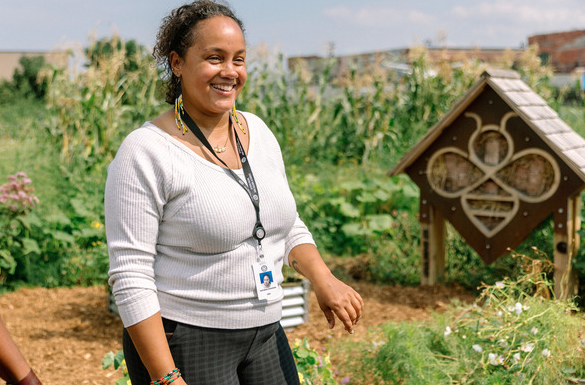
In March, Mayor Mike Duggan named longtime urban farming activist Tepfirah Rushdan as the city’s new director of sustainability. Rushdan was serving as Detroit’s first director of urban agriculture, where she worked to encourage urban farming by improving city policies and streamlining processes. Rushdan is helping lead the process of selecting a new director of urban agriculture, a position that will report to her. Rushdan also previously acted as codirector at Keep Growing Detroit, whose mission is for the majority of fruits and vegetables consumed by Detroiters to be grown in the city. She also is a co-founder of the Black Farmer Land Fund. She serves as treasurer of the Detroit People’s Food Co-op and is a cofounder of Black to the Land Coalition, which connects BIPOC people to outdoor recreation. She is also a board advisor to several other community projects and has formerly held seats at the Detroit Food Policy Council and the Uprooting Racism Planting Justice initiative. In her new role, Rushdan will lead the city’s priority actions within the four main goals of the Detroit climate strategy: Transitioning to clean energy Increasing sustainable mobility Accelerating energy efficiency and reducing waste Prioritizing vulnerable residents and adapting to change Reducing flood risks Protecting from extreme heat Improving air quality SBN Detroit interviewed Rushdan about her role, the challenges, and the opportunities. Q: How will you approach the four main goals of the Detroit climate strategy? A: The key for us to work across all departments within the city. There are some real champions in place who want to meet these goals and are already working to do so. My approach to tackling the four main goals involves fostering collaboration and synergy across all city departments. We are actively building out our capacity within my department to ensure that every arm of our municipal operations contributes to realizing our citywide sustainability vision. Q: You’ve said that you believe Detroit has real potential to become a national leader in municipal sustainability. What is your vision behind this? A: Being in Michigan, we have so many natural assets. Also, Detroit brings some things that may be seen as deficits, like vacant land and blighted areas, but I think these are big opportunities for us. It’s a chance to rethink what the city will look like in the coming years. Coming from an urban farming background, I’ve been thinking about the potential of this vacant land for many years, and I’m excited to find ways to repurpose it toward environmental goals – whether that’s farming, pollinators, solar, or other things. Also, Detroiters have grit. This is a city that’s been largely disinvested in, which has fostered strong resilience in our spirit. There is great potential here. Q: A major immediate focus is the city’s solar neighborhood project, which will replace up to 250 acres of vacant, blighted land in up to six neighborhoods with solar arrays that will create enough clean energy to power all of the city’s 127 municipal buildings. Can you tell us more about this project? A: This was largely driven by the people in the communities. The city put out a questionnaire regarding what the residents would like, and 19 groups responded saying they’d like to utilize the vacant land for projects. This city has met with them alongside other stakeholders and partners to determine what this might look like for the neighborhoods, the logistics of the sites, and so on. We currently have eight potential sites, and we are in meetings with the council to discuss moving forward with three of them for Phase One. We have selected two potential developers. The developers will work closely with the residents to lay out what the sites will look like in terms of design and aesthetics and work hand-in-hand with the neighborhoods. If all goes well with the city council, we’ll be able to start building as early as this fall. Q: What are the challenges of the project? A: I think there is a big opportunity to educate the public about climate change the issues that are at the forefront. It’s a chance to invest in the neighborhoods – communities that have not seen investment in years. This is a chance to spread that out. We’ll also be developing in the immediate areas around the footprints of the sites, investing in housing with energy upgrades, and more. So, I think it’s a chance for us to rise to the challenges of meeting the goals that the state of Michigan, the federal government, and the United Nations have outlined. This will take everyone working together including residents, businesses, and organizations. Q: Overall, do the city’s sustainability goals involve or play into workforce development? A: I’m proud of the work the city is doing around developing our workforce to be ready for the green economy. That’s pivotal. I want to highlight the Detroit At Work program where residents have opportunities to access careers and training. In fact, one of the new training options is around electric vehicle charging. The city is looking forward in terms of where the workforce needs to be and putting things in place for job creation toward these things. Q: What impact do you think your work will have on businesses and the economy? A: Sustainability is not exactly sexy. It takes a lot of work, commitment, and collaboration between businesses, residents, and all stakeholders. Business communities are driving our economy, so we need to be thinking about working alongside businesses to make sure their practices are sustainable. We all have to rethink how we are doing business and working together as a whole to reach our goals. Also, recently the city council unanimously passed the Energy and Water Benchmarking Ordinance requiring buildings with over 25,000 square feet of space to annually report their energy and water usage. This data will be gathered, and learnings and insights will be shared with other large business owners. Other cities have done this, and it’s been helpful. Q: What impacts are
Richard Hosey – Developing Companies, People, as Well as Projects
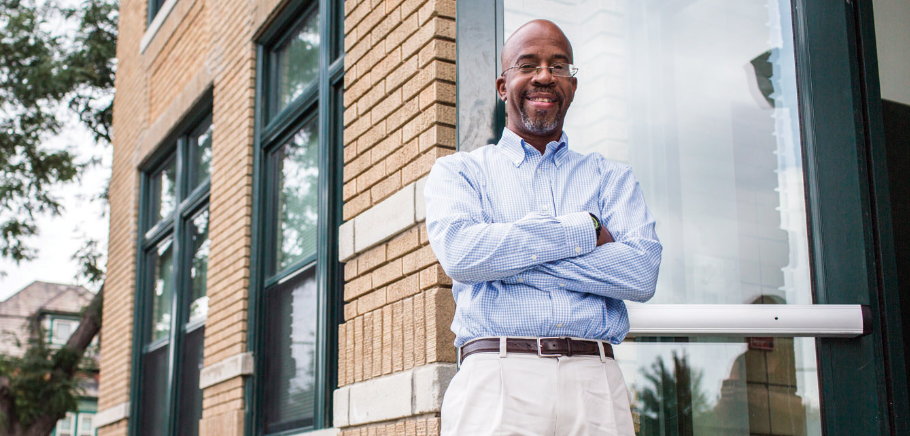
The career of Richard Hosey, owner of Hosey Development LLC, has spanned development, consulting, financing, and asset management of more than 75 projects in Detroit totaling over $2.5 billion in development costs. His most recent undertaking is the renovation of the former Fisher Body 21 plant, a $134 million project that will preserve and redevelop the plant into approximately 435 rental apartments; 38,000 square feet of commercial space; outdoor and indoor amenities; and up to 139 interior and 646 adjacent surface parking spaces. At least 20% of rental units will be affordable for those earning no more than 80% of the area median income ($51,200 or less for a two-person household). SBN Detroit spoke to Hosey about his work and his impact on sustainability in Detroit. Q: Tell us about Hosey Development. A: I’ve been in real estate since 1996, and then I worked for Bank of America from 2005 to 2013 investing in urban development. That job brought me back to Detroit in 2008. I remember arguing with a city councilperson on why the Lafayette Building should not be torn down, and that it should be invested in and rehabbed. She said to me, ‘Would you do it?’ and I thought, yes, I need to stop complaining and start doing something. I started with the Kirby Center Lofts, which was an old Hebrew School in Midtown, and then it became a process after that. Q: Talk about preserving affordable housing in Detroit and how you work to do this. A: In 2008, the city was only building affordable housing, which created concentrated poverty. On the other hand, as the market rate takes off, we need to ensure that it’s reasonably and rationally balanced so housing doesn’t become unaffordable. Revitalization tends to push out affordability, but the City of Detroit has an affordability requirement inside every project to ensure this doesn’t happen. I love the work of the Detroit Land Bank. Affordable housing should not just be apartment living. With programs like Rehab and Ready, they are going into neighborhoods and driving change. Q: You provide financing for your subcontractors. Can you tell us about that? A: I focus on employing Detroiters. Detroit has plenty of construction talent, but there are not plenty of contractors with the capacity to carry a big job. There is an upfront economic load that comes with larger jobs, such as purchasing materials and paying for labor that many – most – construction companies in Detroit can’t shoulder. For my first project – the Kirby Center – I started thinking what if I carry the job? I then met Mel Washington, a local developer who walked me through the process of doing so. Now, my partner and I are using this same concept on the Fisher 21 project. We are using companies that have the skills and the organization to do a big job like this but can’t buy $1 million in HVAC equipment upfront and get paid later. So we do that part. It’s been great working this way. We get Detroit companies who do great work. Q: How do you think sustainability plays into what you do? A: As we build up the ecosystem such that our contractors in Detroit are getting the jobs, the economics go in a circle. Good-paying jobs mean the workers buy homes here, buy cars here, and spend their money here. That’s the ideal model. For a lot of years, construction companies would come into the city, make their money, and go back to their homes in Oakland County or Macomb County. The key is to keep it in Detroit so the dollars stay in the community and circulate. From an environmental standpoint, rehabbing a building versus tearing it down is much better for our planet. The challenge comes with being good to the tenant while being good to the planet. For example, we can put in huge beautiful windows, but how high is the electric bill going to be? We then need to find solutions for the most efficient furnace so the tenant isn’t impacted by a huge expense. Q: The redevelopment of the Fisher plant is the largest Black-led development in the city. What is the importance of this? A: I want this to become the everyday normal. So many processes focus on the idea that there is no talent or capacity in Detroit. I hope to be able to show that larger projects can be handled by Black and Brown teams. We still have a long way to go. The Fisher project at $135 million is just 3% of the $5 billion in development announced in the last twelve months. But I hope to build a model for black funders and black talent to come together. Q: What is the future of Hosey Development? A: I will be in this market for the long run. I picture myself exclusively in Detroit except for one thing – mentoring new and existing developers. Again, I will feel more successful when more Black and Brown people and women are involved in development in the city. And it’s happening. Many small and midlevel Black and Brown developers are coming into Detroit in ways you don’t see in other cities. Diverse developers are landing here because they can get a foothold. Preserving that should be a priority. Removing barriers and growing talent based on ability as opposed to inherited wealth is one of the most important things we can provide in this market. Be sure to subscribe to our newsletter for regular updates on sustainable business practices in and around Detroit.


